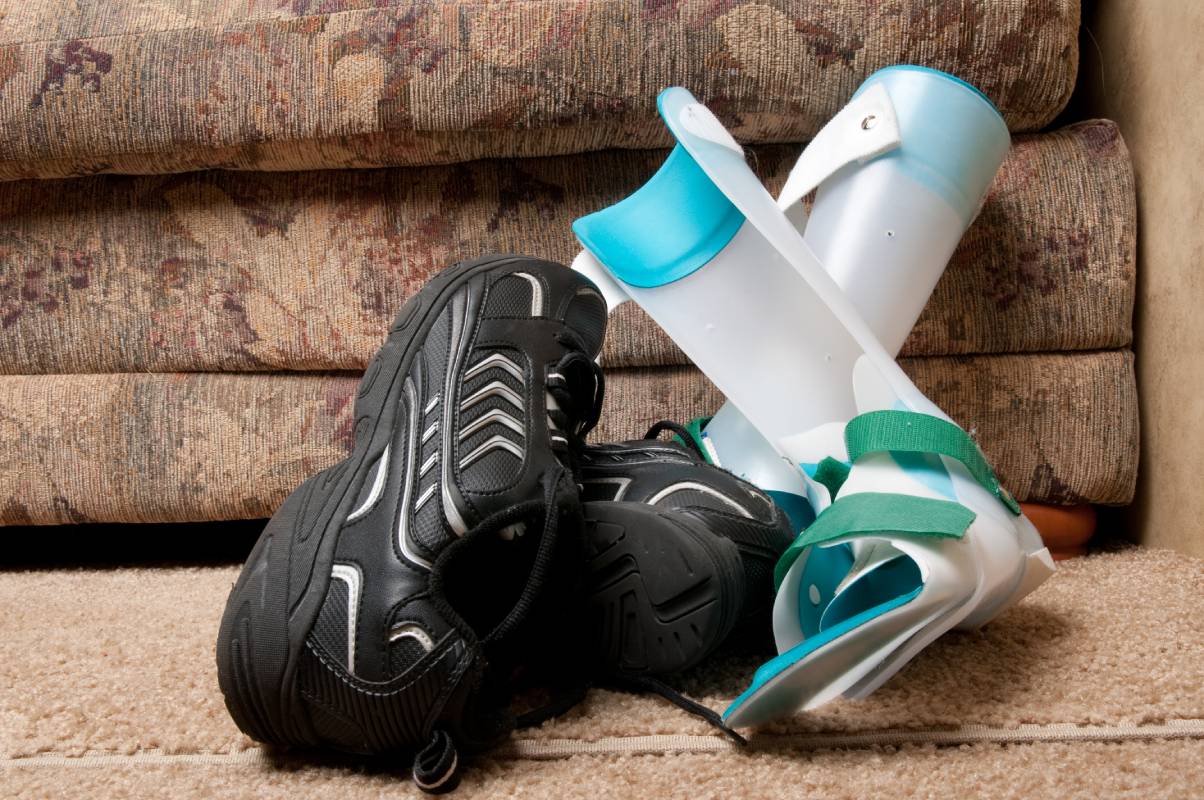Orthotics are assistive technologies that can address many musculoskeletal concerns by correcting position and/or supporting proper function [1]. The most common type is the shoe insert. Since the rise of rapid prototyping techniques, orthotics have become more personalized to individual patients and thus more effective than ever [1]. A central function of orthotics is to correct posture [1].
In a case study involving a 59-year-old male patient with ankylosing spondylitis (AS), an orthotic device was able to alleviate some of the patient’s postural problems and, thereby, postpone his later surgical treatment [2]. The patient received orthotic devices to treat his postural imbalance [2]. Within two weeks of wearing a 9-millimeter gel heel lift on one side, the patient’s posture had markedly improved [2]. The researchers believed that this successful correction could be explained by the heel lift leveling the patient’s hip posture so that he no longer had to walk on his tiptoes [2]. Although this study is but a single investigation into heel lift orthotics, it suggests that orthotics can promote better posture by leveling out patients’ gaits to correct any disruptive asymmetries.
A different study focused on the efficacy of plantar orthotics in promoting improved posture [3]. Foot health is crucial for correct posture because of the foot’s key role for support, weight transfer, and propulsion [3]. In this study, the device in question was an insole technology known as Regular Gait that supports the plantar arch [3]. The experimenters monitored 30 subjects as they wore the RG insoles [3]. None of the subjects suffered from any foot diseases or damage [3]. The orthotics stimulated plantar mechanoreceptors, which promoted a reorganization of users’ plantar stance up to the higher nervous system [3]. By influencing the kinetic biofeedback chains that originate at the level of the foot and travel up to the brain, plantar insole orthotics can significantly improve their users’ upright posture [3].
Another means by which orthotics can correct posture is by beneficially arranging limbs during sleep [4]. This was the case in a study following a patient who suffered from spastic diplegic cerebral palsy [4]. A defining characteristic of the condition is increased muscle tone, which can lead patients to adopt incorrect postures [4]. By arranging the patient’s knee in a way that would improve his posture while he was asleep, the orthosis reduced the chance that the postural corrections made in physical therapy would be nullified during rest periods [4].
Lastly, orthotics can also improve posture in conditions as high up in the body as the spine, as evidenced by experiments involving osteoporosis patients [5, 6]. Pfeifer and colleagues analyzed the effects of a spinal orthosis, which consisted of a system of Velcro-attached belts and a back pad, on women with one or more osteoporosis-caused vertebral fractures [5]. After six months, angle of kyphosis, body sway, and pain decreased, while muscle strength and functional ability increased [5]. Another study suggested that air chamber pads placed on the trunk can improve posture by activating muscles via sensorimotor stimulation [6]. However, the exact mechanism through which the orthosis promoted neurophysiological responses remains unclear, so further research is required on this point [6].
From leveling out asymmetries to favorably arranging limbs during rest periods, orthotics can help correct posture for patients with chronic musculoskeletal conditions.
References
[1] J. Barrios-Muriel et al., “Advances in Orthotic and Prosthetic Manufacturing: A Technology Review,” Materials, vol. 13, no. 2, p. 1-15, January 2020. [Online]. Available: https://doi.org/10.3390/ma13020295.
[2] J. A. Lipton and L. J. Mitchell, “Orthotic Correction of Postural Unleveling in a Patient With Ankylosing Spondylitis,” The Journal of the American Osteopathic Association, vol. 114, no. 2, p. 125-128, February 2014. [Online]. Available: https://doi.org/10.7556/jaoa.2014.026.
[3] C. Oro Nobili et al., “Plantar support for a correct gait,” Italian Journal of Anatomy and Embryology, vol. 121, no. 1, p. 53, 2016. [Online]. Available: https://bit.ly/3eQKQKo.
[4] M. Leite et al., “Design for personalized medicine in orthotics and prosthetics,” Procedia CIRP, vol. 84, p. 457-461, 2019. [Online]. Available: https://doi.org/10.1016/j.procir.2019.04.254.
[5] M. Pfeifer, B. Begerow, and H. W. Minne, “Effects of a New Spinal Orthosis on Posture, Trunk Strength, and Quality of Life in Women with Postmenopausal Osteoporosis A Randomized Trial,” American Journal of Physical Medicine & Rehabilitation, vol. 83, no. 3, p. 177-186, March 2004. [Online]. Available: https://doi.org/10.1097/01.PHM.0000113403.16617.93. [6] L. Vogt et al., “Postural correction by osteoporosis orthosis (Osteo-med): a randomized, placebo-controlled trial,” Prosthetics and Orthotics International, vol. 32, no. 1, p. 103-110, March 2008. [Online]. Available: https://doi.org/10.1080/03093640701838265.
